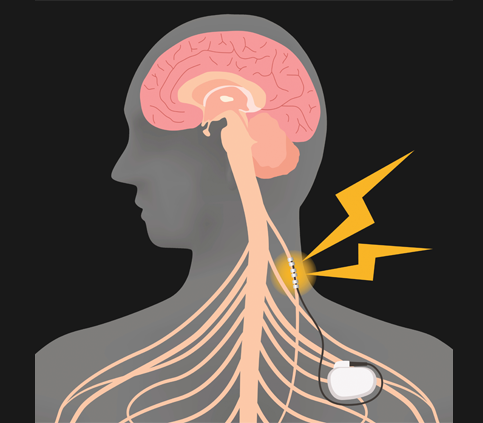We’re sharing information and new findings about the Vagus Nerve. We want our readers to be informed of the disorders that come from the Vagus Nerve when it’s either over or under-stimulated. Here are tips on how to improve it in the comfort of your own home. Thanks for reading and please share it with your loved ones. -the HHN Team
What is the Vagus Nerve?
The Vagus Nerve is the longest cranial nerve in the body that runs alongside the neck starting from the neck to the large intestine. It connects the brain to vital organs and nerves in your body and can stimulate different functions. If under unnecessary tension, it can cause disruption in bioelectrical / vibrational channels that transport and distribute energy throughout the body.
The Vagus Nerve controls a lot of our body’s main functions such as the nervous system, heart rate and digestive systems. These functions are involuntary, which means that you don’t have conscious control over them.
Your left and right vagal nerves contain 75% of your parasympathetic nervous system’s nerve fibers, as stated by Cleveland Clinic.
A lack of vibrational flow can lead to migraines, anxiety, insomnia, asthma and digestive issues for people of all ages.
Conditions that Affect the Vagus Nerve
One condition that can arise due to the damage to the Vagus Nerve is Gastroparesis, which causes unnecessary abdominal inflammation, making it hard for those to maintain an appetite or keep down food. This can result from diabetes, viral infections, abdominal surgery and scleroderma.
Another condition is Vasovagal syncope (fainting), which occurs when a vagus nerve to your heart overreacts to certain situations like extreme heat, anxiety, hunger, pain or stress. Blood pressure drops very quickly (orthostatic hypotension), making you feel dizzy or faint, as stated by Cleveland Clinic.
However, there are some natural remedies that you can do at home to better counter the effects of a damaged Vagus Nerve and reduce stress, calm your nervous system, improve sleep, and ameliorate your digestion.
10 Ways to Improve Vagal Tone from Holistic Psychologist
1. Gargling. This is probably the simplest and most accessible way for a person to work on their vagal tone. In the morning gargle some water as hard as you can. You’ll know you’ve stimulated the vagus nerve when you begin to get a tear response in your eyes.
2. Breathwork. Deep slow breaths from the belly will stimulate the vagus nerve. Sit or lay down and breathe in as much as you can. Hold it for a second or two and then release. Repeat this 5-10 times. You’ll feel euphoric and relaxed afterwards.
3. Laughter. Laughter releases a ton of neurotransmitters which improves vagal tone. Laugh hard and often.
4. Fish Oils. EPA and EHA lower heart rate which strengthens vagal tone.
5. Fasting. The vagus nerve is the director of the parasympathetic nervous system known as the rest and digest system. Giving the digestion process a break through intermittent fasting or less snacks throughout the day will also improve vagal tone.
6. Yoga. The breathing and movement of yoga helps with digestion and has been shown to increase GABA levels. Improving GABA levels will stimulate the vagal tone.
7. Singing. Singing works the muscles in the back of the throat which stimulates the vagus nerve. Just be sure to sing at the top of your lungs for this effect to take place. A great place to do this is in the car.
8. Cold Showers. Cold showers are tough at first, but they can greatly improve vagal tone. As you adjust to the cold, the sympathetic nervous system lowers and the parasympathetic system gets stronger directly affecting the vagus nerve.
9. Massage. A massage stimulates the lymphatics and improves vagal tone.
10. Aromatherapy. Essential oils such as lavender and bergamot have shown to increase heart rate variability which improves vagal tone.
For additional information about the Vagus Nerve please refer to this article also by HHNews. As well as insightful knowledge from Sukie Baxter on Youtube.
